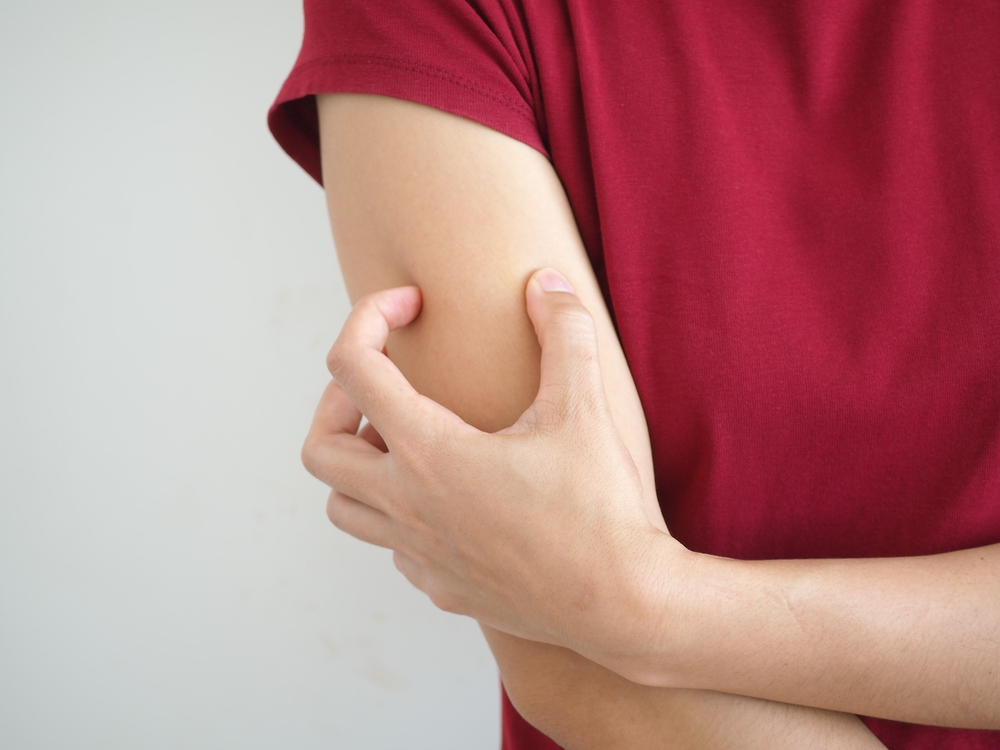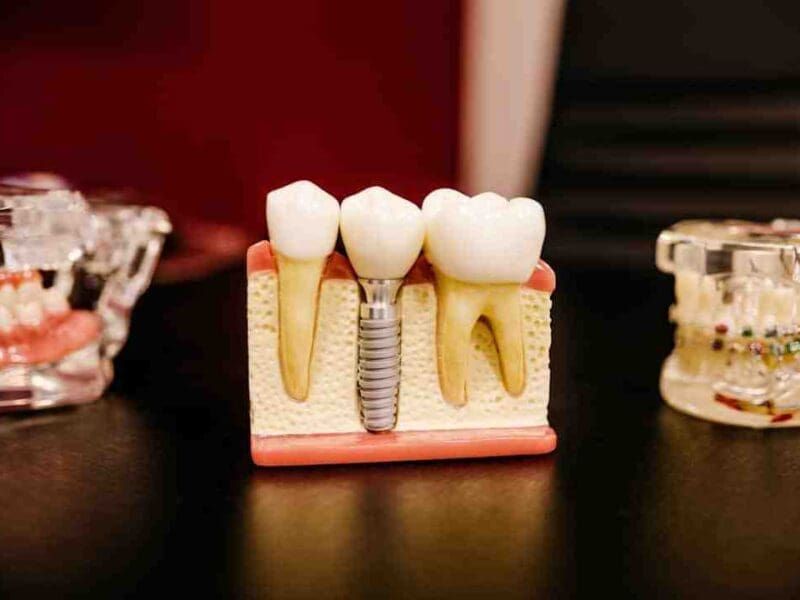
Understanding Hives: Urticaria
Introduction
Urticaria commonly called Hives manifests as pruritic (itchy), raised, well-circumscribed areas of erythema (redness) and edema (swelling) involving the dermis and epidermis. This can be caused by allergic reactions to foods, drugs, cosmetics, or soaps, as well as infections, insect bites, stings, or environmental factors.
It is important to be aware of the symptoms of this condition. Anyone who believes they may be suffering from this condition should seek medical attention for the treatment of chronic urticaria. Chronic spontaneous urticaria can also be confused with several other dermatologic diseases that have similar appearances and are also pruritic; however, an experienced clinician can usually distinguish it from those diseases.
In this article, we will go over urticaria and its treatments in depth.
Pathophysiology of Urticaria
Urticaria is caused by mast cell and basophil release of histamine, bradykinin, kallikrein, and other vasoactive substances in the superficial dermis, resulting in intradermal edema caused by capillary and venous vasodilation and, in rare cases, leukocyte infiltration.
The process can be immune or nonimmune mediated.
Immune-mediated mast cell activation includes:
- Type I hypersensitivity reactions occur when allergen-bound IgE antibodies bind to high-affinity cell surface receptors on mast cells and basophils.
- Autoimmune disorders in which antibodies to an IgE receptor functionally cross-link IgE receptors and result in mast cell degranulation.
Nonimmune-mediated mast cell activation includes:
- Certain drugs cause direct nonallergic activation of mast cells.
- Inhibition of cyclooxygenase by drugs, which activates mast cells via unknown mechanisms.
- Activation by physical or emotional stimuli; the mechanism is unknown, but it may involve the release of neuropeptides that interact with mast cells.
Also read: About Postpartum Hives and Its Management
Classification of Urticaria
Urticaria is classified based on how long it lasts:
- Acute urticaria (lasting 6 weeks and often disappearing within hours to days)
- Chronic urticaria (lasting more than 6 weeks, with daily or episodic weals)
Chronic urticaria can be either spontaneous or induced. Both kinds can coexist.
Symptoms of Acute Urticaria
Acute urticaria manifest differently depending on the person and the situation. They can appear on any part of your body. Symptoms include:
- Wedge-like bumps or welts on the skin. On lighter-colored skin, the bumps may appear reddish.
- The rash turns white (the center of the hive rash becomes pale when pressed).
- Itchy skin.
- Puffiness is caused by swelling beneath the skin (angioedema).
- Lips, eyes, and the inside of the throat may also swell painfully.
Symptoms of Chronic Urticaria
Chronic urticaria and acute urticaria can look similar in many ways: they can be itchy, swollen raised welts that turn lighter in the center when pressure is applied. Chronic urticaria, on the other hand:
- May vary in size and shape.
- Appear, disappear, and reappear at least every few days for extended periods, even months or years.
- Can occur as a result of heat, exercise, or stress.
Urticaria: Affecting Different Parts of The Body
Urticaria can affect any part of the body, including the following:
- Legs
- Arms
- Trunk
- Face
Urticaria on the Legs:
Some people develop “papular urticaria” as a result of insect or spider bites. It is most common in children who have not yet developed immunity to these bites. Lesions can appear anywhere, but they most commonly appear on the legs.
Some typical characteristics are as follows:
- The itchy red bumps, known as papules, appear in clusters.
- Each papule has a central point and measures 0.2 to 2.0 centimeters across.
- They could be liquid-filled.
- As old papules disappear, new ones may appear.
- Papules may reappear as a result of a new insect bite.
Urticaria on the Face:
Urticaria caused by an allergy or sensitivity reaction can have a significant impact on the face, for example, by causing swelling in the lips.
The swelling may spread and affect the mouth, throat, and airways. In this case, the person may have difficulty breathing. This is an emergency, and the person requires immediate medical attention. They are at risk of developing anaphylaxis, a potentially fatal condition.
Urticaria Diagnosis
By examining your skin, your doctor can diagnose urticaria and angioedema. Allergy tests can help identify what is causing a reaction, but this is mostly true for acute urticaria. Knowing the cause can assist in avoiding allergens and the urticaria that accompany them. The following allergy tests can be used to diagnose urticaria:
Skin Tests: Your healthcare provider may examine your skin for allergens during this test. If your skin becomes red or swollen, it indicates that you are allergic to that substance. A skin prick or scratch test is another name for this type of allergy test. Skin testing is rarely performed for chronic urticaria.
Blood Tests: A blood test looks for specific antibodies in your blood. To combat allergens, your body produces antibodies. Urticaria and swelling can occur if your body produces too many antibodies.
Urticaria Treatment
The best treatment strategy is determined by the cause and whether the urticaria is acute or chronic.
Treatment of Acute Urticaria
If the symptoms are mild and occur as a result of an allergen or irritant, home remedies can usually relieve the itching until the rash goes away. However, a doctor may recommend the following options:
- Non-sedating antihistamines, such as cetirizine (Zyrtec) or fexofenadine (Allegra)
- Short-term use of topical steroids
- Antiseptic creams to prevent secondary infections
- Soothing itching creams
If there are signs of allergy, such as swelling in the lips, face, or tongue, the doctor may prescribe an epinephrine auto-injector to carry for emergency use.
Treatment of Chronic Urticaria
A person suffering from chronic urticaria may need to take antihistamines regularly until their symptoms subside.
Omalizumab (Xolair) is an injectable medication that inhibits immunoglobulin E, a substance that plays a role in allergic reactions. It has been shown to alleviate the symptoms of chronic spontaneous urticaria, a type of hives with an unknown cause. This is usually the recommended treatment of chronic urticaria.
Chronic urticaria can cause extreme discomfort, distress, and even depression. It can also be aggravated by stress. Furthermore, having urticaria can exacerbate stress. Anyone who believes that urticaria is interfering with their quality of life or mental well-being should consult a doctor.
Summary
Urticaria is a skin rash. It could be caused by an allergy, another trigger like adrenaline, an underlying health condition, or other factors. Acute urticaria appears suddenly and lasts for 6 weeks, whereas chronic urticaria can last months or years. Researchers must find a potential treatment of chronic urticaria to improve lives. Many clinical research organizations are conducting chronic urticaria clinical trials in the US to help improve the quality of life of those suffering from this condition.
If a person is aware that certain foods, such as seafood, cause urticaria, they may be able to avoid them. However, because the cause is not always obvious, prevention is not always feasible. Consult a doctor if urticaria is affecting your quality of life. A doctor can recommend treatment and determine whether an underlying health problem is to blame.







